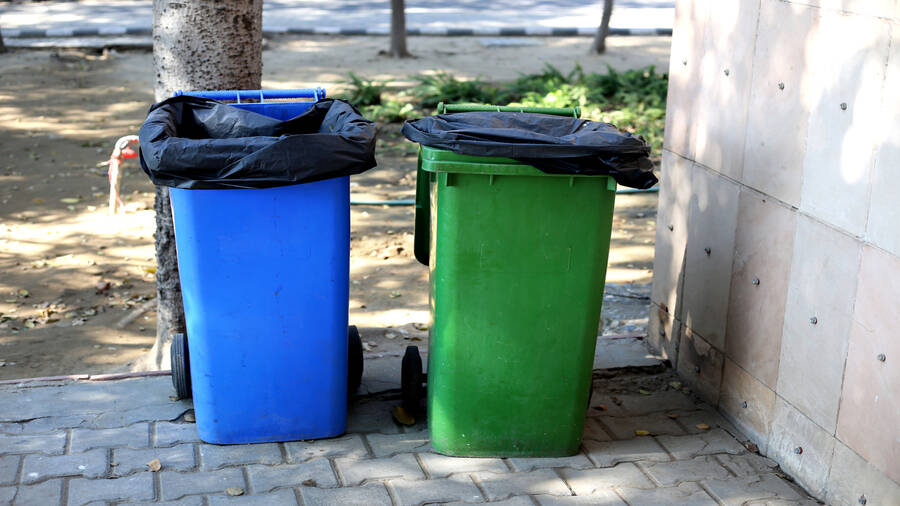Only about 40 per cent of residents of Kolkata municipal area have been given bins to keep household waste segregated, Debabrata Majumdar, the member, mayor-in-council, in charge of the Kolkata Municipal Corporation’s solid waste management department, said on Saturday.
Even in some of the places where bins have been distributed, people were still mixing all kinds of waste, ruining the objective behind the distribution of colour-coded bins.
Majumdar asked councillors to visit those places in their wards and talk to residents. Councillors must explain to the residents why segregating the waste is necessary, he said.
Kolkata Municipal Corporation (KMC) had started distributing green and blue bins from December 1 as it introduced the segregation of solid waste at the household level. Earlier, all kinds of waste were mixed together and collected, barring in 27 wards where segregation of waste has been underway for a few years.
A resident of Kasba in south Kolkata said that civic officials came with the bins and distributed them to many households on Sunday.
The green bins are meant for biodegradable wastes like kitchen waste, cooked food, fruit and vegetable peels, soiled paper and meat and bones.
The blue bins are meant for non-biodegradable wastes like paper, plastic cup, glass, metal books, leather, cloth rags and wires.
“We have distributed about 40 per cent of the bins,” Majumdar said. “In some of the places where the bins have been distributed already, people are still going ahead with the old practice. They are mixing the biodegradable and non-biodegradable wastes,” Majumdar said.
“I will request the councillors to visit those places where residents are not segregating the wastes,” he said.
Majumdar said one of the reasons why only 40 per cent of the bins have been distributed in nearly three months since the distribution began was because the KMC was consciously going slow in distributing the bins. “We are not handing over everything at one go. We are doing this slowly so that the transition is smooth,” he said.
The KMC has purchased about 33 lakh bins for distribution across the city. While all single dwellings will be handed over two bins, those staying in large apartments will have to deposit their household wastes in two large bins kept on the ground floor of the apartments. The waste collectors of the KMC will collect the waste from the large bin on the ground floor.
In areas where the bins have been distributed, the KMC is sending vehicles with compartments to collect wastes from households. These vehicles are having both green and blue bins, larger in size than the ones given to households. Residents have to throw the waste kept in the green bin onto the larger green bin in the cart.
The same process follows for transferring the waste from the blue bin.
Art fest

Around 1,500 students, between nine and 12 years, participated in an art workshop on Sunday. “One Earth. One Family, One Future” was the theme of the 31st edition of the Anand Art workshop hosted by the Apeejay Anand Children’s Library, under the aegis of the Apeejay Schools.
Most of the children who attended the workshop are from poor families. The workshop was hosted on the Apeejay House lawns (in picture) and at Apeejay School in Salt Lake, Haldia and Bhubaneswar.
Apeejay Anand Children’s Library, an education support programme for underprivileged children, was started in 1992 in Kolkata in memory of Anand Paul, one of the promoters of the Apeejay Surrendra Group.
